In the last few years, Nexters’ Hero Wars has arguably been the company’s biggest success, and we can’t say that’s any kind of a surprise. The company had quite a hit with this iOS and Android adventure RPG, which allows you to collect close to 50 different heroes as you fight to protect the fictional land of Dominion across different modes. Five-on-five battles against human and AI-controlled teams are at the heart of the game, regardless of mode, and we’d say four dozen heroes is a pretty good number that won’t overwhelm most casual RPG gamers but won’t be too few either for hardcore fans of the genre. But which ones should you prioritize for your team of five?
Now we’ve discussed all of the modes in previous guides, but as anyone who’s been playing this game for a while should know, different modes require different team compositions for the best chances of success. Sure, many of the recommended heroes will be similar, but there are so many subtle differences and unique situations that may force you to change things up, to say little of how certain heroes become more or less useful as you progress through the 13-chapter Campaign mode. So join us today as we bring you our Hero Wars team building guide, a complete guide to team composition for all of the game’s available modes.
Campaign Mode – The Early Chapters (1-3)
When talking about Campaign mode in Hero Wars, your choice of team wouldn’t matter too much in the early chapters. Generally, you’ll have to make do with what you have, meaning initial heroes Galahad, Astaroth, Thea, Aurora, and perhaps one of the more familiar names like Ginger, Keira, or Phobos whom you could get in the Heroic Chests. In these chapters and stages, you’ll learn the importance of having a good Tank like one of or both of the first two heroes, a damage-dealer, a healer, and a support character to do the little things behind the scenes.
Phobos, for instance, would be an example of the latter, as his skills essentially prevent enemy characters from unleashing their own skills for a few seconds — at times, that could make a difference more than any damage against the enemy or healing on your end.
In the early goings, you’ll also want to make it a habit to review the enemies you’ll be facing in a level before hitting on Start. This will determine whether you may need to consider the situational needs before swapping certain heroes in for someone who’s in your usual team of five in Campaign mode.
Also, you’ll notice as we move on that we normally recommend balanced team compositions for most, if not all modes in the game, Campaign included. And when we say balanced, we mean at least one Tank but not more than two, two to three damage-dealers, at least one Healer but no more than two, and preferably one or two Support/Control, just as long as none of these role categories are completely ignored.
Campaign Mode – The Middle Chapters (4-8)
Once you’ve gotten past the first three chapters in Campaign mode, your choice of heroes will become more important, as the enemies will become tougher, especially when it comes to the Heroic Missions — those where you can get a given Hero’s Soul Stones when you play or replay them. At this point, it will become essential to have a durable Tank or two up front like the aforementioned Galahad or Astaroth — the former combines good offense with well-above-average durability and has some vampirism/self-healing abilities, while the latter’s Fire Shield could provide some much-needed protection against the enemy attack, with his final skill coming in handy as it allow him to resurrect himself or another ally as a onetime boost per battle.
And if you have them unlocked already, Luther and Rufus are good situational Tanks, with the former most useful against teams with an especially deadly or durable backline character, and the latter capable of providing protection and healing when used against teams that deal a lot of Magic Damage. We say situational, because when it comes to the bigger picture, we still see the two basic Tanks as the best overall choices.
Next, you’ll need one or two primary damage-dealers, such as the aforementioned Ginger and Kiera, who are Marksmen (or should we say, marks-women?), or another front-liner like Ishmael or Elmir. The former two can do a ton of damage with their respective primary skills, while the latter two bring their own unique elements to the table. Ishmael can take out tough enemies in an instant thanks to his primary skill that increases critical hit percentage, and can also use his second skill to dodge enemy attacks for a few seconds. His vampirism can also come in handy when it comes to self-healing and extra durability.
As for Elmir, we’ve long been fans of his non-primary skills, which allow him to create clones of himself to provide extra offense while serving as damage-absorbing decoys. Your mileage will largely vary here, depending on who you’ve unlocked so far, but the main thing here is to have three Tanks and damage-dealers combined, with a maximum of four and minimum of two.
Alternately, Faceless is effective when used properly — make sure you’re using his primary skill after you use the ally’s skill that’s most needed at that given time! (For example, if you need an instant dose of healing, activate Doppelgänger after using a healing skill.) You can also utilize Cornelius as a damage-dealer, despite his overall squishiness — his fourth skill reduces a random enemy’s first skill until he dies, while his primary skill deals a ton of damage against the enemy team’s smartest Hero.
Related: Hero Wars (Nexters) Character Skills Guide: A Complete Guide to All 45 Heroes
Also important at this mid-part of the campaign are your Healers. On a per-Hero basis, Thea doesn’t heal as effectively as most others, but she does, at least, heal everyone with her primary skill. Celeste can be very effective with her primary skill, which, in Light Form, could heal the ally with the lowest Health, and in Dark Form, could curse the entire enemy team and temporarily prevent them from benefiting from healing effects. While another good thing about her is that it only takes 50 percent energy to activate her primary, her main weakness is the fact that she’s very, very squishy.
Finally, we believe you should have at least one Support or Control Hero on your team in the middle chapters. Once again, availability may play a big part in your choice, but generally speaking, Jorgen is quietly good as he could sap an enemy’s Energy, thus preventing them from using their skills right away, or protect the ally with the lowest health.
Dorian, meanwhile, can also function as a Healer, with his primary skill allowing allies to recover health when they attack a marked enemy, but his main benefit is his fourth skill, which is a passive one that increases Vampirism for allies — the best thing about this is that it works even when he’s dead! Again, Phobos could be a useful Control Hero if you’ve leveled him up sufficiently.
Although we often consider her as a Healer, Martha is technically filed under the Support category as well. She provides next to no offense at all, but is extremely durable and can use many of her non-primary skills to provide excellent healing benefits to multiple allies.
Campaign Mode – The Latter Chapters (9-13)
The last five chapters are where things, as they say, get serious. If you found the first few chapters to be a walk in the park and you found the middle chapters slightly challenging at points, but doable, you’ll notice that when it comes to the latter chapters, your choice of heroes to level up will really, really come into play. Even if you see the difficulty for a stage as Normal, you may still find it very difficult to get past it if your top five to 10 heroes aren’t compatible to the type of enemies you’ll be facing.
However, we’ve noticed that our best combination in the later chapters typically features Astaroth as the tank, Ginger and Keira as the damage-dealers, Celeste as the Healer, and Dorian as the Support.
Although Galahad will do well in several stages, especially when paired with Dorian for extra Vampirism, his lack of durability as compared to Astaroth may do more harm than good once you’re in the second or the third battle. If you’ve been saving up your Trophies in Guild mode or taking part in the events, Ziri could be a good alternate Tank due to the skill that allows her to burrow underground and regain health once she drops below 35 percent, but if you’ve been working on Astaroth since the start of the game and making sure he’s your No. 1 or No. 2 Tank, he’s arguably the safest option. Again, if you see that the stage features several magic damage-dealing enemies, Rufus can help out in a pinch if he’s been leveled up quite a bit.
Alternately, having a frontline Warrior like the aforementioned Elmir or Ishmael makes sense when it comes to combining damage and durability, especially in the stages (Chapters 9 and 10) that feature the Basilisk — a big, tough, Triceratops-like enemy minion that deals out a lot of damage by goring your heroes, and is extremely durable to boot. During stages with the Basilisk, it’s best to have two sturdy front liners, including one that can deal out solid damage to lead the way or complement your Marksmen or Mages.
Speaking of damage-dealing heroes, we’re still sold on Ginger and Keira as your best choices at this point, especially if you made sure to level them up, promote them, and evolve them whenever possible — again, these are typically among the first few heroes you’ll be unlocking. But as an alternate choice for the latter levels, the brother-sister duo of Lars and Krista can work well as a team if you stack their primary skills on top of each other, with the latter soaking enemies and doing area damage with her primary Icy Vengeance skill and the former dealing out an electric shock with his own primary, Lord of the Storm. A fully-evolved, promoted, and leveled-up duo of Helios and Orion could also work if you’ve been using those Tower Coins to buy Soul Stones of the latter.
As for the Healers, Celeste is still our all-around choice for best healer as her offense — once in Dark Form — can be quite solid as a counterpoint to her impressive healing abilities in Light Form. However, it doesn’t hurt at times to swap her out for Thea (assuming she’s among your top 5-10 heroes), or even Jet, assuming you’ve gathered a ton of Soul Stones and evolved several heroes to Ultimate Star level.
For Support/Control, Dorian is an obvious shoo-in because of all that bonus Vampirism he provides, as well as his multiple healing skills such as Ancestor’s Amulet (for an ally with the lowest health) and Wings of Night (for himself). Best of all, you don’t necessarily have to have him as one of your top five heroes — we finished Chapter 10, for instance, with a level 79 Dorian alongside heroes that were at level 95 to 105.
As for alternatives to Dorian, it’s at this point where we should say that Martha can also function as a Tank (it’s her secondary role) despite her backline positioning — few heroes are as hard to take out as she is. You can field her alongside Celeste or Thea, or even alongside Dorian because you’ll need all the healing you can get in these more difficult Campaign stages. Sadly, Jorgen typically isn’t as effective as he usually is at this point, and neither is Nebula or Faceless — they’re good to great up to the middle Campaign chapters, but less so in the latter ones.
Arena / Grand Arena Mode – It Largely Depends On Your (Human) Opponents
Moving on to Hero Wars’ Arena mode, you’ll definitely need to customize your attacking team quite often, as you’ll be facing different opponents with different teams of five, each of them potentially requiring a few changes here or there. As such, it’s arguably easier to choose the defensive unit, which would usually involve the same or a similar group of five heroes as the ones we suggested for Chapters 9-13 of Campaign mode. Again, it’s going to be Astaroth or Galahad as your Tank, heroes such as Ginger, Keira, K’arkh, Ishmael, Elmir, Astrid and Lucas, or Qing Mao as your damage-dealers (depending on who’s unlocked), Celeste or Thea as your Healer, and Dorian, Martha, or Jorgen as Support/Control.
When choosing your attack team, the same composition would work most of the time — balanced is the best way to go. Most of the time, any balanced combination of the aforementioned heroes should work against opposing teams with a similar or lower team power.
Some of the deadliest teams we’ve faced are those that have one sufficiently powered-up (level 500+, five-star or Ultimate Star, orange rank) damage-dealer complemented by four Healers, Support, and/or Control Heroes. In such situations, you’ll need at least two but not more than four high-damage, high-durability types like Galahad, Elmir, and/or Ginger, but no more than one high-damage, low-durability type like Keira or Qing Mao. Finally, at least one Hero with healing skills (not necessarily a Healer) would be needed for such a setup — Celeste’s squishiness could make her a liability, so if you’ve got her in your team, you might want to complement her with Martha or Dorian.
For situational heroes who could do well in Arena mode, we’re again suggesting Rufus to counter high magic damage enemy teams, Lars/Krista or Helios/Orion if you’ve got both of them among your top 10 heroes, or Cornelius against enemy teams that have Martha but don’t have Astaroth to bring her back to life. Teaming Cornelius with Faceless is effective in other modes, but not in Arena — as all battles are played automatically, it’s never guaranteed that Faceless will be used to replicate Cornelius’ skill to immediately take Martha out like you could in Tower mode! In fact, we’d generally advise against using Faceless in Arena or Grand Arena due to the auto-play element resulting in him using his primary skill willy-nilly.
Speaking of Grand Arena, any Hero Wars veteran should know that this involves best-of-three battles that require 15, and not 5 heroes all in all. Again, balanced team construction matters for your defensive teams, but just to jog your memory on what we advised you for attacking teams, you’ll need to review your opponent’s team construction (as you can for all three teams if you’re ranked outside of the top 100) when choosing the order in which your teams will be attacking.
Make sure to take into account the levels and ranks of enemy heroes per team — if the opponent chooses to field their best team last, you’ll generally want your worst team scheduled third, with your top two teams facing the enemy’s weaker two for the best chances of sweeping the best-of-three battle. Conversely, field your second-best team (if they’ve got what it takes) against the enemy team if they bring out their weakest five heroes first, pit your weakest team against their strongest, and your best team against their second-best if you’re looking for a 2-1 victory or better.
Tower Mode – Adjust To Your AI Opponents
One important thing we need to get out of the way when talking about Tower mode in Hero Wars is the fact that it gets progressively more difficult as you level up. That’s what makes it important to keep your best five to ten heroes leveled up as your team level increases, as it’ll be difficult to get far in the Tower if you’re spreading things too evenly. Preferably, you’ll want to focus on no more than 15 heroes (also works for Grand Arena) if you want to have a solid rotation for Tower mode.
As a refresher, Tower battles pit your human-controlled team against an AI-controlled unit as you move from one level to the next, opening chests filled with gold coins, Tower Coins, or items for promotion, or activating buffs with the Skulls you win for each battle. You can skip a certain number of levels in a day based on how many battles you won the previous day, and since this is Hero Wars’ equivalent of a gauntlet mode, health and energy are only restored via buffs.
Once a Hero dies, they cannot be revived unless you luck out and have enough Skulls to spend for the super-rare buff that revives the Hero of your choice! Take note, however, that all heroes start with full health and energy by default, assuming you passed through at least one Tower level the day prior.
We hate to sound like a broken record, but having the same balanced team composition we suggested for Arena/Grand Arena and Campaign generally works in Tower. That means it’s more of the same heroes, assuming you focused on your initial heroes from the start, with your team selection depending as well on the AI team’s composition as a second variable. But if we were to choose specific heroes to focus on in Tower, we would recommend the following, in order of priority, and suggest choosing 10 out of 15 in total.
Tanks (choose 2 to 4): Astaroth, Galahad, Ziri, Rufus, Luther
Damage-Dealers (choose 4 to 6): Keira, Ginger, Ishmael, Elmir, Astrid and Lucas, Lars/Krista, Helios/Orion, Qing Mao, K’arkh, Jhu, Satori
Healers (choose 2): Celeste, Thea, Jet
Support / Control (choose 2 to 4): Dorian, Jorgen, Martha, Faceless, Nebula, Andvari
Again, we must stress that you should keep things balanced and, if possible, do NOT focus on more than 15 of the aforementioned heroes! Do not spread yourself too thin or you’ll be struggling to make it past level 20 more often than not.
Outland And Highwaymen – The Two Overlooked Modes
It may be because they’re so easy to complete, but Outland and Highwaymen modes don’t get focused on too often in Hero Wars as compared to Campaign, Arena/Grand Arena, and Tower. However, you’ll want to come back to these modes regularly (if not exactly every day) in order to earn Soul Stones for the heroes in their respective stores.
In the Outland section, under Masters, you’ll be limited to certain heroes for each of the three bosses. For starters, Vadjar the Incinerator is protected against ranged attacks and immune to magic, so you won’t see Marksmen like the always-popular Keira in this category. Depending on who you’ve got, your choices will include five of the following — Galahad, Ishmael, Luther, Nebula, Astrid and Lucas, Elmir, K’arkh, Rufus, Qing Mao, Andvari, Ziri, Chabba, or (the super-rare) Cleaver. Generally, your choice will be irrelevant if your Outland level per boss is far removed from your team level, but once your level per boss catches up with your team level, that’s where you’ll need to consider fielding the balanced lineup we’ve mentioned so many times in this guide.
The above rule of thumb would also apply to the two other bosses in this game. To recap, you will only be allowed to use Keira, Ginger, Cornelius, Martha, Dante, Jhu, Dark Star, Artemis, Fox, Sebastian, Daredevil, or Jet against Ilyssa the Weaver (protected against melee attacks, immune to magic), and limited to Astaroth, Celeste, Faceless, Jorgen, Helios, Orion, Dorian, Lars, Krista, Thea, Satori, Markus, Kai, Lian, Mojo, Phobos, Maya, Peppy, Arachne, Judge, Aurora, Lilith, or Heidi against Brog the Conqueror (immune to physical attacks). Choose your best five regardless of role if your Outland level doesn’t quite match your team level, keep it balanced if both levels are far more similar to each other.
For Highwaymen, you’ll need to complete these battles in order to earn Highwayman Coins, and these are very, VERY easy — you can defeat them with just about any combination of five just as long as they combine for at least 43,000 team power, and once you’ve beaten a Highwayman once, you can simply raid them and finish the battles automatically. In other words, team composition is almost always irrelevant when it comes to the Highwaymen — pretty much, they’re a walk in the park once you’ve got the aforementioned combined team power.
And this wraps up our team guide for all available game modes in Hero Wars. Do you agree with our picks? Or have you found more effective team compositions? Let us know your thoughts in the comment area below!

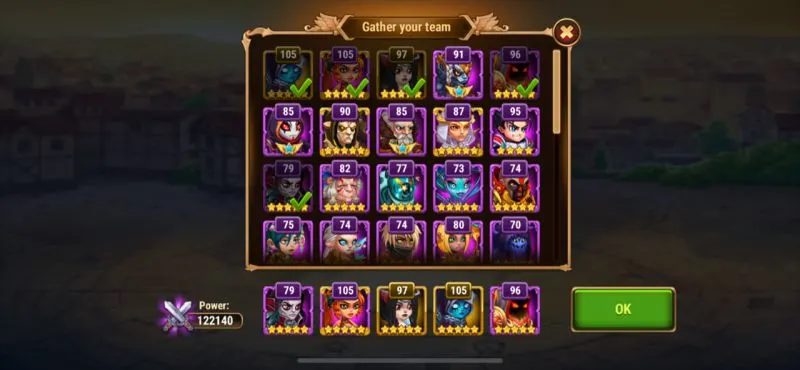
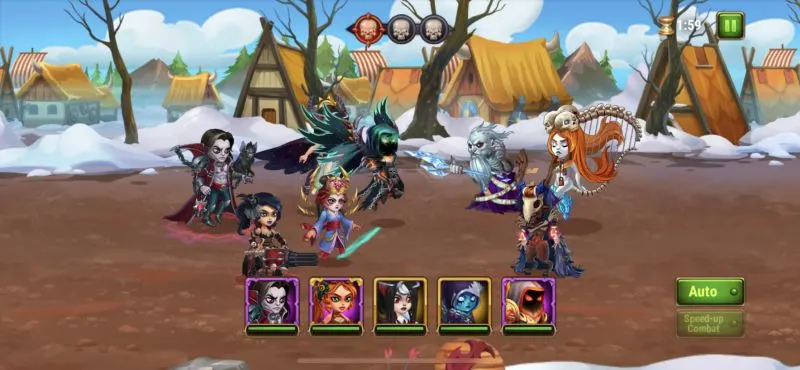
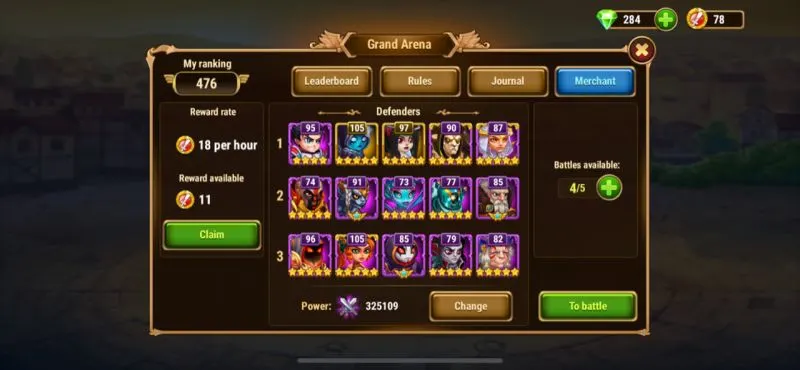
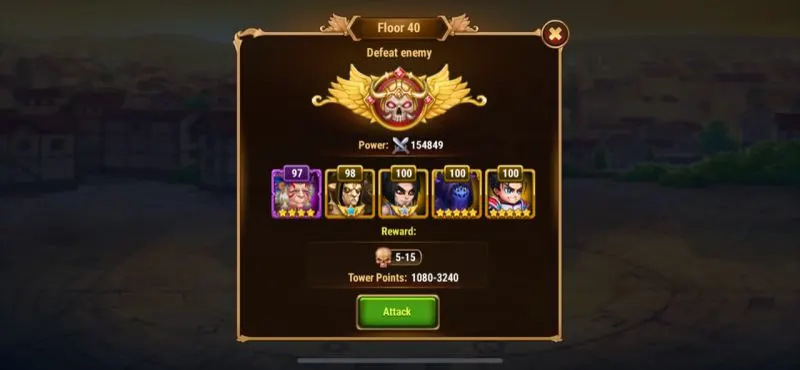
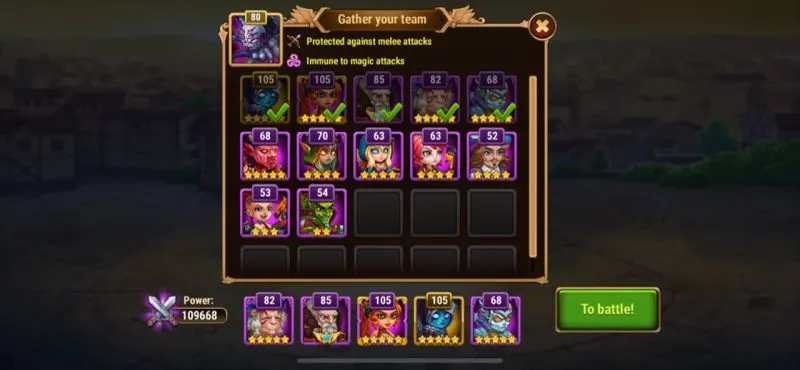
Cerafil
Friday 7th of January 2022
great help page. sadly people need to give out name and email to place comment
Tristan
Thursday 4th of June 2020
I can't use right mouse (clic ?) for translate into my language. Too bad...